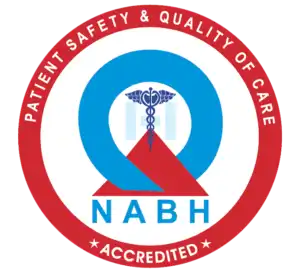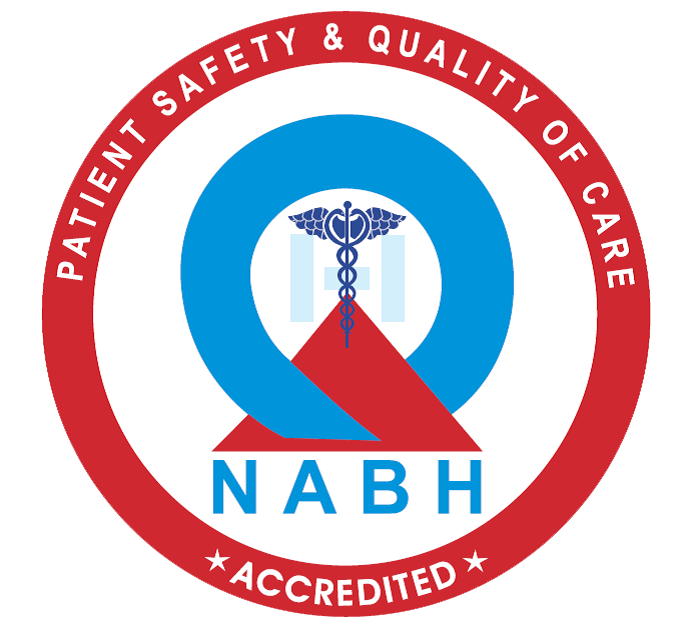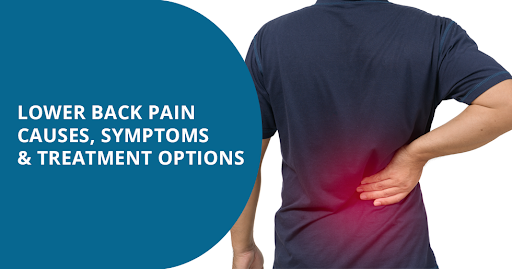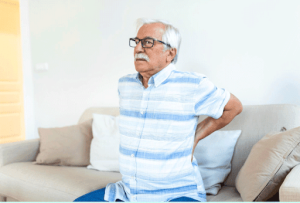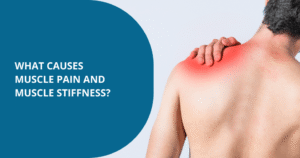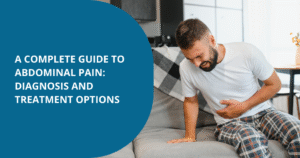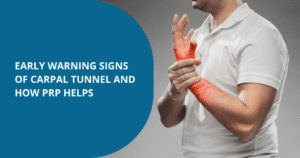Lower back pain(LBP) affects the lumbar spine injuries to muscles or tendons (cords of tissue that connect muscle to bone). Up to 23% of adults worldwide have chronic lower back pain. LBP will affect one in two adults during their lifetime, with peak prevalence among adults 40–50 years.
Lower back pain is common and varies by individual. Understanding these factors and exploring tailored treatment options can help you effectively manage lower back pain symptoms. Let’s explore relief solutions.
Common Causes of Lower Back Pain
Low back pain (LBP) is a symptom, not a disease, with many possible causes. Most cases are musculoskeletal, and 90% of acute LBP patients recover within a month with simple treatments.
It can vary from a dull ache to sharp pain shooting down the leg and may result from an accident, heavy lifting, age-related spine changes, or conditions like arthritis.
General Causes
- Muscle or tendon strain and sprains are common causes of back pain, often from heavy lifting, poor technique, or sudden movements like sneezing or bending.
- Poor posture, spinal fractures, or conditions like osteoporosis or spondylolysis (a specific type of stress fracture or crack in spinal bones) cause LBP.
- Structural issues like spinal stenosis occur when the spinal column narrows, causing nerve compression and pain. Lumbar scoliosis and spondylolisthesis (vertebra slippage) can also lead to lower back pain, stiffness, and mobility issues.
- Spinal disks cushion your vertebrae but can bulge or tear, causing a pinched nerve or herniated disk.
- Osteoarthritis and ankylosing spondylitis are arthritis types that cause lower back pain.
Lower Back Pain Causes in Males
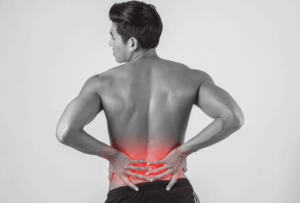
Back strains and sprains are common causes of lower back pain affecting all age groups.
- Muscle strain due to overstretching, heavy lifting, poor posture, or repetitive sports activities like golf are the lower back pain causes in males.
- Studies show smoking may increase back pain risk by 30%, possibly by damaging lower back tissues and reducing blood flow and nutrients.
- Prostate issues and kidney infections can cause lower back pain in men, often affecting the sides and genital area. Conditions like prostatitis or prostate cancer may also cause pain in the lower left back.
- Men are more likely to develop kidney stones than women; the incidence is 11% in men and 9% in women, causing severe back or side pain that doesn’t get better.
- Men are prone to back pain from high-impact activities like heavy lifting, prolonged sitting, and inconsistent exercise, which strain the spine, muscles, and ligaments.
- Accidents and sports injuries can also lead to sudden back injuries.
Lower Back Pain Causes in Women

- Menstrual pain (dysmenorrhea) occurs before or during menstruation, with symptoms ranging from mild to severe back pain and pelvic discomfort.
- Endometriosis, a chronic condition where tissue similar to the uterine lining grows outside the uterus, causes severe LBP in affected women.
- Pelvic inflammatory disease (PID) is an infection of the reproductive organs and is one of the lower back pain causes in women.
- Fibroids (noncancerous growths that develop in or on the uterus), ovarian cysts (fluid-filled sacs that form on or within the ovaries), and Adenomyosis (endometrial tissue grows into the muscular wall of the uterus) cause LBP.
- Lower back pain during pregnancy, especially in the second and third trimesters, is caused by increased stress on back muscles and hormonal changes.
Other Common Causes
- An abdominal aortic aneurysm (walls of an artery become weak and artery wall bulge outward).
- Problems with your gall bladder or pancreas.
- Pain around the back of your pelvis or sacroiliac (SI) joint.
Symptoms of Lower Back Pain
General Symptoms
- Lower back pain symptoms can range from sharp, dull, aching, burning, or a combination of all of these.
- It can be constant, intermittent, or activity-related.
Radiating Pain
- It can radiate to the buttocks or legs (sciatica), worsen with certain positions, and improve when lying down.
- Tingling or numbness in the lower body.
Other Indicators
- Difficulty standing or walking.
- Worsening pain with movement or prolonged sitting.
Also Read: Top 5 Ways to Relieve Back Pain
Diagnosis and Importance of Consulting a Specialist
Role of a Lower Back Specialist
- According to the American Association of Neurological Surgeons, though lower back pain is common, certain signs need lower back specialist attention, like persistent or worsening pain, numbness, tingling, weakness, or changes in bowel or bladder function.
Diagnostic Methods
- A neurosurgeon diagnoses lower back pain based on your history, symptoms, physical exam, and diagnostic tests.
- If conservative treatments are ineffective, imaging and other tests are recommended to diagnose lower back pain symptoms:
- Computed Tomography Scan (CT or CAT scan)
- Computed Tomography Scan (CT or CAT scan)
- Discography
- Electromyography (EMG)
- Nerve Conduction Studies (NCS)
- Magnetic Resonance Imaging (MRI)
- Myelogram
- Also, blood tests can identify genetic markers for conditions like ankylosing spondylitis, while urine tests can detect kidney stones, which cause pain in the lower back.
Why Early Diagnosis is Crucial
- Your doctor will assess your lower back pain symptoms and check whether it can improve with simple treatments like ice, painkillers, physical therapy, and proper exercises.
Treatment Options for Lower Back Pain
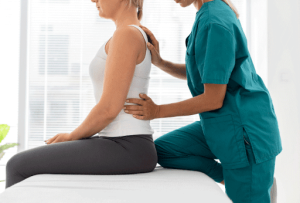
Conservative Management
- Mild to moderate lower back pain often improves with rest, ice, and OTC pain relievers.
- Staying active promotes healing by increasing blood flow.
- Lower back pain treatment depends on the cause, severity, and duration and may include:
-
- Medications: NSAIDs, prescription pain relievers, or muscle relaxers for spasms.
- Physical Therapy: Strengthens muscles and improves flexibility, posture, and alignment to prevent re-injury.
- Hands-On Treatments: Chiropractic adjustments, acupuncture, mindfulness-based stress reduction, tai-chi, yoga, motor control exercises, progressive relaxation, electromyography biofeedback, low-level laser therapy, operant therapy, cognitive-behavioral therapy, and spinal manipulation or relax muscles and reduce pain.
Advanced Non-Invasive Treatments
-
- A lumbar epidural steroid injection (ESI) delivers anti-inflammatory medication into the epidural space around the spinal nerves in the lower back. It helps reduce chronic pain caused by inflammation or irritation of spinal nerve roots.
- Nerve blocks can relieve chronic pain and improve quality of life, benefiting those with severe arthritis or chronic back pain.
- Neural Radiofrequency ablations for facet joints It is a minimally invasive procedure used to treat chronic pain originating from the facet joints in the spine. Facet joints are small joints between spinal vertebrae that enable flexibility. Medial branch nerves transmit pain from these joints to the brain. Similarly, sacroiliac joints near the tailbone have lateral branch nerves that send pain signals.
- Radiofrequency ablation targets these nerves to reduce pain transmission.It involves using heat generated by radio waves to disrupt pain signals transmitted by nerves supplying the facet joints.
- Regenerating therapies involve replacing, repairing, or regenerating human cells, tissues, or organs to restore normal functions.
- The Platelet-rich plasma (PRP) technique has emerged as an innovative therapeutic option for degenerative spine disease and is a simple, safe, and cost-effective procedure.
- A study confirms PRP therapy sustained pain and disability improvement in 90% of patients and can significantly improve low back pain, disability, and walking ability scores in short-term treatment with no clinically significant adverse events.
Surgical Options
- Some lower back injuries and conditions require surgical repair, determined by conducting tests.
- Spinal decompression, Diskectomy, and Spinal fusion/fixation are minimally invasive surgeries done for severe, unresponsive cases.
Also Read: When Is Surgery Necessary for Lower Back Pain
When to Seek Medical Help
If low back pain worsens or does not improve after two to three weeks of home treatment, contact the physician.
Signs to consult a lower back specialist immediately:
- Severe or persistent lower back pain.
- Pain with numbness, weakness, or loss of bladder control.
- Pain unresponsive to rest or OTC treatments.
Timely treatment is essential for lower back pain symptoms to prevent complications.
Conclusion
Understanding the causes, symptoms, and treatment options for lower back pain is essential for effective management. Consulting a lower back specialist at Epione ensures accurate diagnosis and personalized treatment tailored to your needs.
Take proactive steps, including maintaining a healthy lifestyle and seeking timely medical advice, to manage and prevent lower back pain. Epione’s specialized lower back pain treatment in Bangalore improves your overall quality of life.
Also Read:
- Is Your Job Contributing to Lower Back Pain? How to Identify Occupational Risks.
- Non-Surgical Treatments for Lower Back Pain: What Works Best?
- The Link Between Lower Back Pain and Sciatica
